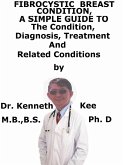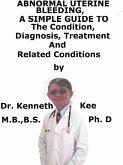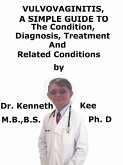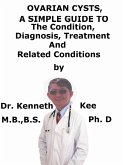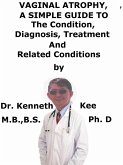It may be done through:
1. Vaginal hysterectomy
A surgical cut in the vagina, and using a laparoscope
2. Abdominal hysterectomy
A surgical cut in the belly (called open or abdominal)
3. Laparoscopic hysterectomy
Three to four small surgical cuts in the belly and then using a laparoscope
4. Robotic hysterectomy
Three to four small surgical cuts in the belly, in order to perform robotic surgery
The patient and the doctor will have to select which form of procedure is suitable.
The selection will be dependent on the medical history and the reason for the surgery.
It may be a choice if the patient does not want children, medicines do not work, or the patient cannot have any other interventions.
The main types of hysterectomy are.
1. Total hysterectomy
During a total hysterectomy, the uterus (womb) and cervix (neck of the womb) is removed.
2. Subtotal hysterectomy
A subtotal hysterectomy requires excising the main body of the uterus and leaving the cervix behind
3. Total hysterectomy with bilateral salpingo-oophorectomy
A total hysterectomy with bilateral salpingo-oophorectomy is a hysterectomy requiring removal of:
a. The fallopian tubes (salpingectomy)
b. The ovaries (oophorectomy)
4. Radical hysterectomy
A radical hysterectomy is normally carried out to eliminate and treat cancer when other treatments such as chemotherapy and radiotherapy are not effective or have not succeeded.
During the surgery, the body of the uterus and cervix is excised, along with:
a. The fallopian tubes
b. Part of the vagina
c. Ovaries
d. Lymph glands
e. Fatty tissue
The most frequent reasons for having a hysterectomy are:
1. Heavy periods which can be induced by fibroids
2. Pelvic pain which may be produced by endometriosis, pelvic inflammatory disease (PID), adenomyosis or fibroids
3. Prolapse of the uterus
4. Cancer of the uterus, ovaries or cervix
5. Heavy menses
Preoperative Details
1. Stop smoking
2. Eat a healthy, balanced diet
3. Exercise regularly
4. Lose weight
The patient may be requested to stop taking aspirin, ibuprofen (Advil, Motrin), clopidogrel (Plavix), warfarin (Coumadin), and any other drugs similar to these
Postoperative Details
Following surgery, the patient will be prescribed pain medicines.
The patient may also have a tube, termed a catheter, passed into the bladder to pass urine.
The patient will be asked to move around as soon as possible following the surgery.
The patient may go back to a normal diet as soon as the patient can without inducing nausea and vomiting.
The duration that the patient stays in the hospital is dependent on the type of hysterectomy.
The patient can probably go home the next day when surgery is done through the vagina using a laparoscope or following robotic surgery.
When a larger surgical incision in the abdomen is made, the patient may require staying in the hospital 1 to 2 days.
Following a hysterectomy, the patient may have some temporary side effects:
1. Bowel and bladder disturbances
It is advised that the patient drinks plenty of fluids and increases the fruit and fiber in the diet to help with the bowel and bladder movements.
2. Vaginal discharge
Following a hysterectomy, the patient will have some vaginal bleeding and discharge.
Average recovery times are:
Abdominal hysterectomy: 4 to 6 weeks
Vaginal hysterectomy: 3 to 4 weeks
Robot-assisted or total laparoscopic hysterectomy: 2 to 4 weeks
A hysterectomy will cause menopause if the patient also have the ovaries removed.
TABLE OF CONTENT
Introduction
Chapter 1 Hysterectomy
Chapter 2 Causes
Chapter 3 Symptoms
Chapter 4 Diagnosis
Chapter 5 Treatment
Chapter 6 Prognosis
Chapter 7 Uterine Cancer
Chapte...
Dieser Download kann aus rechtlichen Gründen nur mit Rechnungsadresse in A, B, CY, CZ, D, DK, EW, E, FIN, F, GR, H, IRL, I, LT, L, LR, M, NL, PL, P, R, S, SLO, SK ausgeliefert werden.




